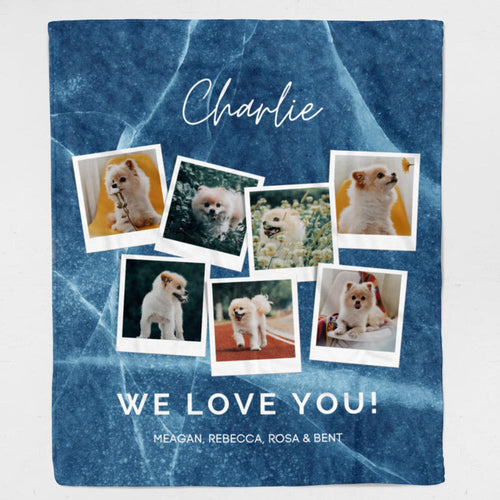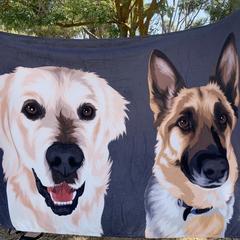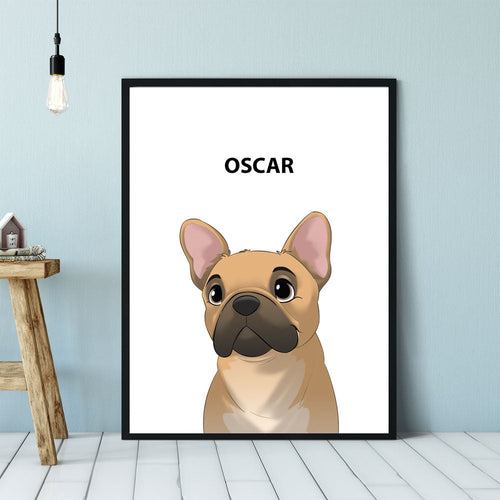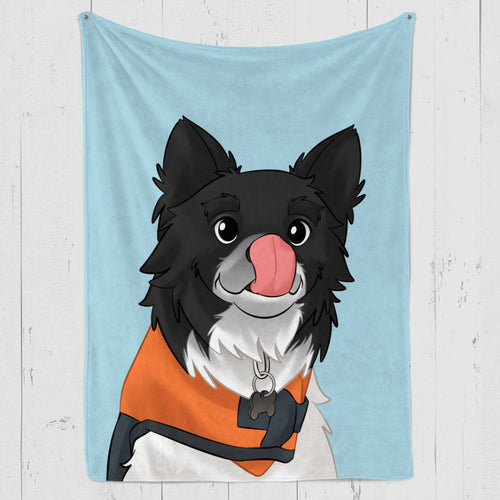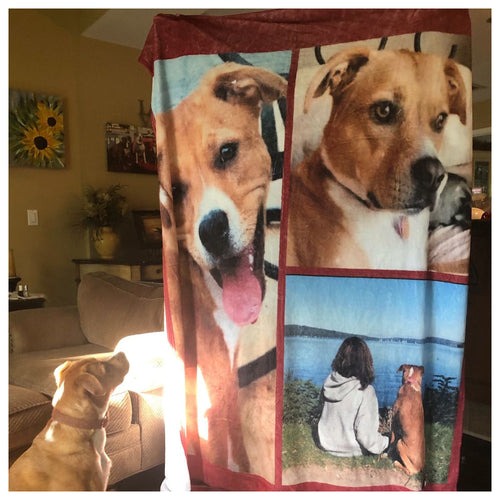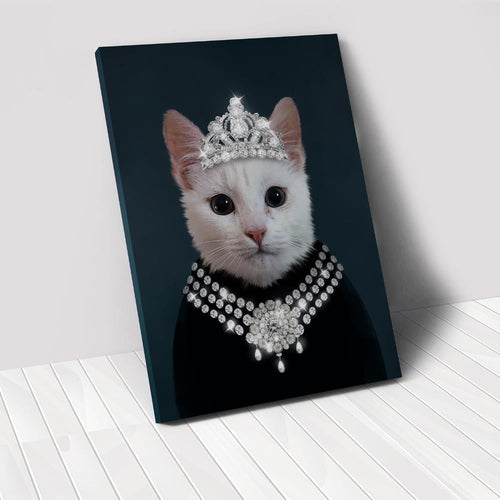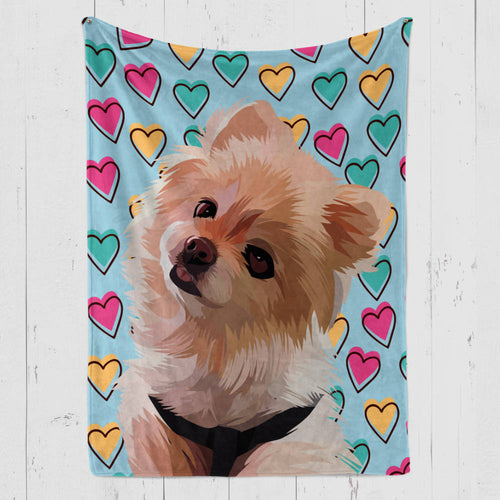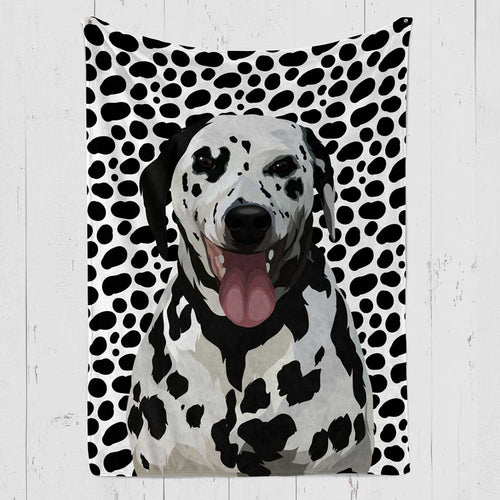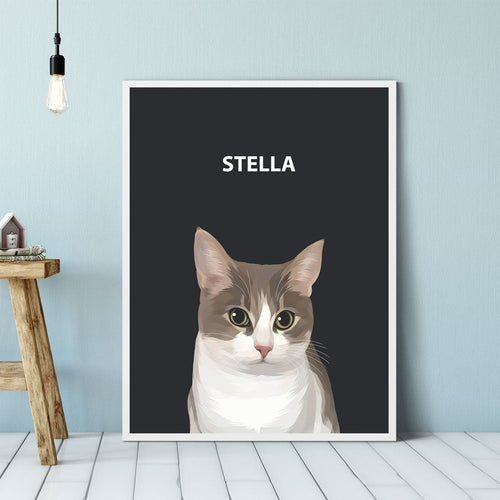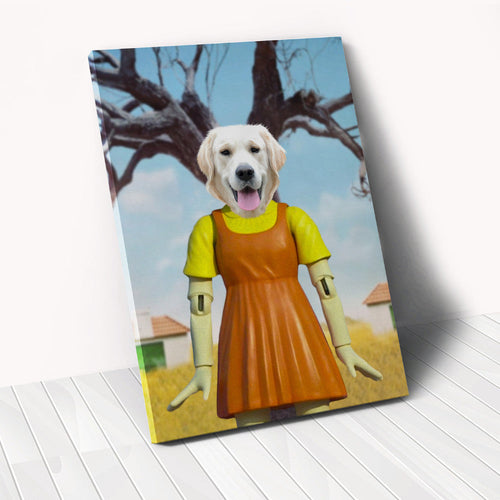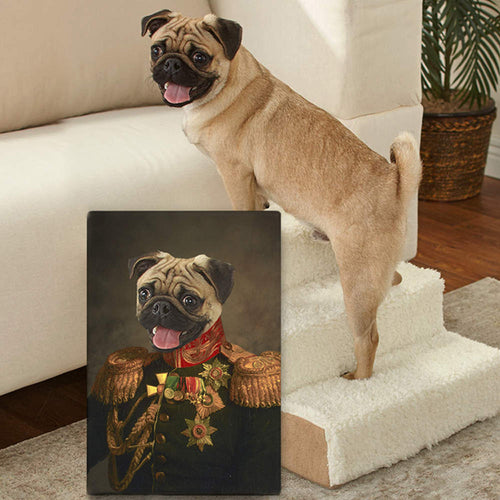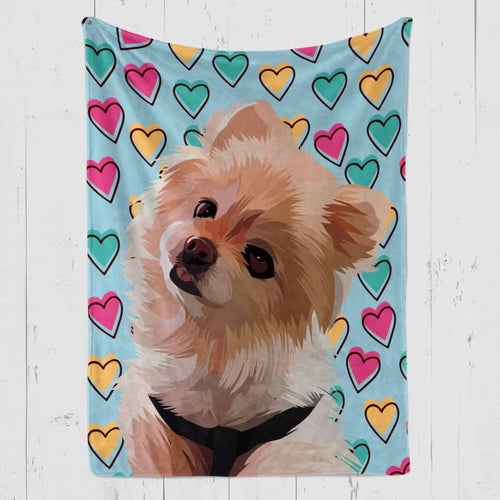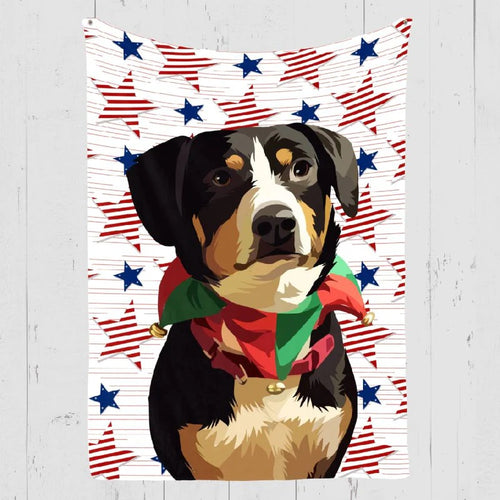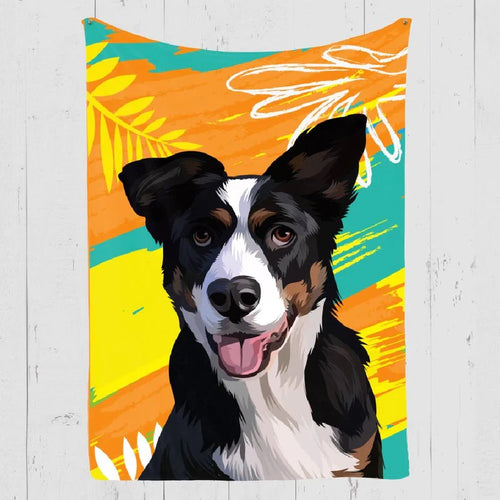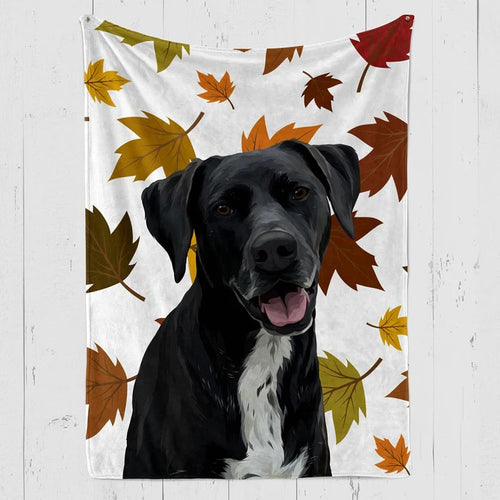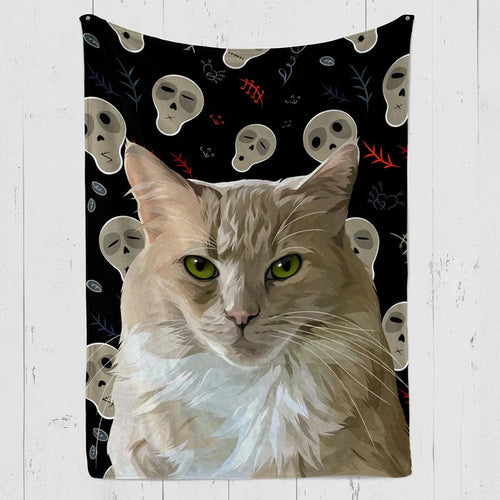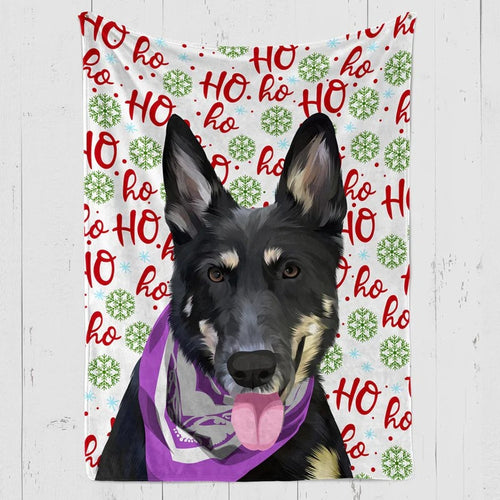
Purse dogs, often referred to as toy or miniature dog breeds, have captured the hearts of countless dog enthusiasts worldwide. These small canine companions are known for their diminutive size, charming personalities, and, often, the ability to fit comfortably inside a purse or bag. Some people might wish to have their own bag dog because American life often imitates Hollywood trends.
These dogs often belong to particular breeds and weigh no more than five pounds (2.27 kg). Several breeds naturally fit within this category. However, some can reach more than five pounds. Toy poodles, Yorkshire Terriers, Maltese dogs, Bichon Frise dogs, Chihuahuas, and Spitz dogs are further options.
A Brief History of Purse Dog Breeds
Canines, according to scientific consensus, benefit from a "slippery genome" in their DNA, making mutation and adaptation more rapid. This helps to clarify the wide range of dog sizes, from giant Irish wolfhounds to little teacup Chihuahuas.
There is evidence to suggest that our canine-loving ancestors began breeding and domesticating smaller canines in the Middle East, some 12,000 years ago. These canines descend from the smaller gray wolf native to the Middle East.
The fact that there are so many cute little dog breeds to choose from is a testament to the positive effects that human engagement (domestication, loving care, and protection) can have on animals. Humans alleviated some of the evolutionary pressure on dogs to become large and powerful by providing shelter and food. Domesticated dogs have evolved less for life in the wild and more for life with people.
Smaller dogs were wanted by humans on occasion for functional reasons, such as the need to fit the dogs into tight quarters, or in order to go on rodent hunts. On the other hand, sometimes people just wanted a lap dog that was more manageable in size. Whatever the motivation, over time people have selectively bred smaller dogs in order to create a breed with a certain set of physical and behavioral characteristics.
Characteristics of Purse Dog Breeds
The traits of purse dog breeds—also known as toy or small dog breeds—set them apart from other canine species. These little friends are well-known for their charming characteristics:
- Their little stature is immediately noticeable. Dogs of the "purse breed" kind often range in size from 6 to 12 inches in height and 2 to 12 pounds in weight. Their small size makes them convenient to carry around in a handbag or purse.
- Purse dogs may be little, but their enormous personality makes up for their diminutive stature. Typically, they exude an upbeat and optimistic demeanor, full of self-assurance and heightened awareness. These canines are known to develop deep attachments to their human family members.
- Purse dog breeds are known for their unusually high IQ. They can pick up new skills and routines quickly and easily. Because of their intelligence and enthusiasm to please their owners, training them is a breeze.
- Purse dogs, which often have long, silky coats, have special maintenance requirements. Different breeds may require more or less frequent brushing, bathing, or even the assistance of a professional groomer.
- Purse dogs may be little, but they have a lot of energy that has to be used. Short walks and active play are great ways to keep kids physically and cognitively engaged. A healthy and happy purse dog is one who gets enough exercise.
- Purse dogs are frequently highly vigilant, making them excellent guard animals. They are very attuned to subtle shifts in their surroundings and will speak out if something appears incorrect.
- These canines are extremely devoted to their families and enjoy the company of humans. They have a reputation for being extremely loving and supportive, always up for a cuddle.
- Adaptability: Dogs of the purse variety behave well in a wide range of settings, from tiny apartments to sprawling mansions. They are conveniently compact, making them an excellent choice for singles, couples, families, and the elderly.
- Many pocket dogs keep their lively nature until old age. They are great for anyone who wants a companion who is energetic and fun to be around because of their love of games, toys, and people.
Popular Purse Dog Breeds
1. Poodle

Standard, miniature, and toy poodles are the three sizes that are available. One can pick up the tiniest of them (weighing in at between 4 and 6 pounds) with a single hand. While toy poodles may appear delicate and fussy, they are actually rather intelligent and fairly energetic for their size. Kids will go crazy if you teach them some tricks or teach them to play hide-and-seek. Additional benefit: they don't contain any allergens.
- Group: Non-Sporting
- Height: 15-22 inches
- Weight: 40-70 pounds
- Energy Level: High
- Physical Characteristics: Curly or wavy coat, graceful build
- Lifespan: 10-18 years
- Color: Black, white, brown, apricot, silver, cream, red, gray, blue, brindle
- Shedding: Low
- Bark: High
2. Pug

Pugs are lovable and active, but they also tend to slouch about the house, so it's important to keep an eye on their nutrition and get out the hoover frequently. They may get away with anything behind that adorably wrinkled smile.
- Group: Toy
- Height: 10-13 inches (25-33 cm)
- Weight: 14-18 pounds (6.4-8.2 kg)
- Energy Level: Moderate
- Physical Characteristics: Short-muzzled, wrinkled face; curled tail; compact, square body
- Lifespan: 12-15 years
- Color: Fawn, black, silver
- Shedding: Moderate
- Bark: Moderate
3. Cavalier King Charles

These exquisite dogs were originally created for the Chinese aristocracy, and they still exude an aura of nobility with their lion's manes and devoted personalities. As such, they demand to be treated like royalty, which means more pillows and snacks.
- Group: Toy
- Height: 12-13 inches
- Weight: 13-18 pounds
- Energy Level: Moderate
- Physical Characteristics: Long, silky coat; large, round eyes; short nose
- Lifespan: 10-15 years
- Color: Black and tan, tricolor (black, tan, and white), ruby
- Shedding: Moderate
- Bark: High-pitched, infrequent
4. Bichon Fraise

These fluffy canine companions are usually up for a cuddle, despite their goofy, lively, and even naughty natures. This fluffy white coat sheds very little, although it does need regular care.
- Breed Group: Non-Sporting
- Height: 9-12 inches
- Weight: 12-18 pounds
- Energy Level: Moderate
- Physical Characteristics: White, curly coat, black nose and eyes
- Lifespan: 12-15 years
- Color: White
- Shedding: Light to non-shedding
- Bark: Moderate
5. Biewer Terrier

The Biewer terrier, a close relative of the Yorkie (pronounced "beaver"), stands out for having an admirable tricolored mane and full tail. This friendly breed gets along with people and other pets of all kinds, and its coat requires regular cleaning but doesn't shed.
- Group: Toy
- Height: 7-11 inches
- Weight: 4-8 pounds
- Energy Level: High
- Physical Characteristics: Long, silky coat, tri-colored with white, black, and gold or tan markings
- Lifespan: 12-15 years
- Color: Tri-colored
- Shedding: Moderate
- Bark: Yappy
6. Chihuahua

These canines are little, standing about 5 to 8 inches at the shoulder and weighing up to 6 pounds. They may be little in stature, but they make up for it with charm. Chihuahuas may be overbearing if not properly trained, thus they shouldn't be around young children. However, their high levels of vitality and attitude make them entertaining and devoted pets.
- Group: Toy
- Height: 5-8 inches
- Weight: 6-8 pounds
- Energy Level: High
- Physical Characteristics: Small, apple-shaped head; large, erect ears; long tail
- Lifespan: 15-20 years
- Color : Black, brown, white, tan, or a mix of these colors
- Shedding: Moderate
- Bark : Loud and high-pitched
7. Dachshund

Because of their distinctive form, these "hot dogs" may be quickly identified in a crowd. In addition to their cute, expressive looks, Dachshunds are noted for their outgoing natures and eagerness to join in on the action. There are three distinct coat types and a wide range of colors available. Miniature breeds often weigh little more than 11 pounds at maturity. This breed makes a great watchdog because despite their little size, they have a powerful bark.
- Group: Hound
- Height: 8-11 inches
- Weight: 11-32 pounds
- Energy Level: Medium
- Physical Characteristics: Long body, short legs, long snout
- Lifespan: 12-16 years
- Color: Black and tan, red, chocolate, cream, and silver
- Shedding: Moderate
- Bark: High-pitched
8. Corgi

Before her death, Queen Elizabeth was reported to have had a soft spot for Corgis. Because of their history as herders, these little but lovable dogs are robust, but they are also very friendly, giving them a good choice for those who want a large dog's attitude in a small dog's body. There are several types of Corgis, but the Pembroke is by far the most common. Only the Pembroke's ears are pointed, making them easily distinguishable from other breeds like the Carid.
- Group: Herding
- Height: 10-12 inches
- Weight: 25-30 pounds
- Energy Level: Medium
- Physical Characteristics: Short legs, long body, fox-like face
- Lifespan: 12-15 years
- Color: Red, sable, black and tan
- Shedding: Moderate
- Bark: High-pitched
9. West Highland Terrier

You may recognise this dog as a West Highland White Terrier. According to Askeland, "Westies can be fantastic smaller dogs for those with an active lifestyle," since they have a deep appreciation for the great outdoors and require many opportunities for play and exploration. And they're really sociable, too. Because of their wiry coats, they require less maintenance than long-haired dogs. In terms of shedding, they also tend to be rather low.
- Group: Terrier
- Height: 10-11 inches
- Weight: 15-20 pounds
- Energy Level: High
- Physical Characteristics: Small, sturdy build with a white double coat
- Lifespan: 12-15 years
- Color: White
- Shedding: Moderate
- Bark: High-pitched, frequent
10. Beagle

According to Askeland, this kind of dog is ideal for families. Beagles, she adds, reflect the best of both worlds due to their love of activities and their ability to remain home and chill with family. "Beagles are generally family-friendly dogs with a happy-go-lucky personality and desire to be a part of the group," she says. They're active and playful creatures that thrive on following their noses and other cues. Their natural inquisitiveness might lead children astray, so it's important to keep them occupied with constructive pursuits.
- Group: Hound
- Height: 13-15 inches
- Weight: 20-30 pounds
- Energy Level: High
- Physical Characteristics: Small, compact body with medium-length legs and a short tail. They have a short, dense coat that is usually tricolored (black, white, and tan). Their ears are long and floppy, and their eyes are big and brown.
- Lifespan: 10-15 years
- Color : Tricolored (black, white, and tan)
- Shedding: Moderate
- Bark : Loud
Caring for Purse Dog Breeds
Less Food, More Benefits
There is a disparity in the caloric needs of large and small dog breeds. Small dogs have a higher surface area per kilogramme, hence they need more energy keeping warm, walking, etc. than huge dogs do. They use more vitality just traveling from one place to another. Your neighbor's Labrador may take only 100 steps to get to the end of the block, whereas your Lhasa Apso may take 400.
Although smaller dogs require a higher total daily caloric intake than larger dogs, it is still important to keep them from becoming overweight. Both large and tiny dogs are at risk from obesity.
Special Considerations for Puppies
They require more frequent, higher-calorie meals since their little bodies can't store as much energy as a larger breed's can.
Because of their small stomachs and voracious appetites, mini breed puppies need to be fed several little meals throughout the day. For information on how much to feed your pet, see the back of the food packaging or consult your vet.
Puppies of any size need to be kept safe, but not coddled. To look a cute little Cavalier King Charles Spaniel puppy in the eye and firmly say "No!" takes a strong heart, but it's necessary. Small breed dogs benefit greatly from beginning their training early on, as this lays the groundwork for a calmer, more reliable, and better-behaved adult dog.
Having a Healthy and Prolonged Lifespan
The average lifespan of a little dog is much higher than that of a huge or gigantic breed dog. Several little dog breeds, including the Maltese, Chihuahua, Yorkshire Terrier, and Miniature Dachshund, are known to have long lifespans. Both Miniature Poodles and Border Terriers live to ripe old ages, with the greatest lifespans known to approach 20 years.
The combination of a lengthy life expectancy and urban living means that little dogs typically require extra protection to be healthy well into old age. Supplemental antioxidants outside of regular veterinary visits can assist tiny dogs' bodies better deal with the stresses of aging and city living.
Proper Nutritional Support
Our dog diets for small dogs use specially-sized kibble that is easy for dogs of all sizes and shapes to pick up and chew.
It's important to feed your dog a balanced diet that includes all the nutrients he needs to live a long and healthy life, including a superior antioxidant bundle, Omega-3 and Omega-6 fatty acids, a small kibble size, and nutrition based on his lifestage, all of which should be packaged in a meal that he finds delicious.
Conclusion
Purse dogs may be little in size, but don't let that fool you; they have large hearts and even greater personalities. A long and happy life for your cherished pocket-sized dog is possible with the right kind of care, grooming, training, and attention. Overall, purse dog breeds are highly recommended because of their endearing personalities, devoted natures, and compact sizes.
Frequently Asked Questions
Do purse dog breeds have specific grooming requirements?
Purse dog breeds, especially those with long, silky coats, have unique maintenance requirements. Maintaining the quality of their coats requires both regular brushing and sometimes expert grooming.
Are purse dog breeds good for apartment living?
Purse dog breeds are highly recommended for city apartments. They are perfect for those who live in apartments or other tiny dwellings due to their compact size and flexibility.
Are purse dog breeds good with children and other pets?
Many breeds of purse dogs, after properly socialized, get along well with both children and other pets. They are cute and cuddly, but their tiny stature makes them easily injured or killed by larger creatures.
What is the average lifespan of purse dog breeds?
The typical lifetime of a handbag dog varies greatly amongst different breeds. Factors such as genetics and access to healthcare might increase or decrease this average lifespan.
Do purse dog breeds have specific health concerns?
There are several health risks unique to handbag dog breeds. Dental difficulties, luxating patellas, and tracheal collapse are just some of the concerns that may arise. Keep your pet healthy by learning about breed-specific health risks and scheduling frequent veterinary checkups.
How much exercise do purse dog breeds need?
To maintain their health and happiness, all dog breeds, even purse dog breeds, need frequent physical activity. Their activity demands may often be met by a combination of short walks, play, and mental stimulation.
Are purse dog breeds easy to train?
Purse dog breeds are often quite trainable since they are smart and ready to learn. These dogs often respond well to consistent training based on positive reinforcement.
Are purse dog breeds hypoallergenic?
Although several purse dog breeds, like the Poodle and Bichon Frise, are considered hypoallergenic because they shed so little, this is not the case for all such dogs. It is important to spend time with a dog before taking one home to see whether there may be any allergic responses, as these might differ from person to person.
Reference Links:
- https://www.thepioneerwoman.com/home-lifestyle/pets/g33851902/small-dog-breeds/
- https://www.goodhousekeeping.com/life/pets/advice/g1829/toy-dog-breeds-miniature/
- https://www.romper.com/p/8-tiny-cute-purse-dogs-under-15-pounds-that-wont-break-your-back-18539785
- https://www.dailypaws.com/living-with-pets/pet-compatibility/small-dog-breeds
Latest Review on Woof Blankets
To have such a masterpiece by my side every day is a gift for me and my memories with Rex. Thank you WoofBlankets for such an opportunity to recreate his image on a blanket.Lara o’ Miguel US, California

COLLECTION WORTH EVERY PENNY
BEST SELLERS
-
Woofy Single Color Custom Pet Blanket
![Woofy Single Custom Pet Blanket – Woof Blanket]()
- -41%
BlanketsSHOP NOW- Regular price
- from $64.95
- Sale price
- from $64.95
- Regular price
-
$109.95 - Unit price
- per
Sold out -
Exclusive Christmas Custom Pet Blanket
![Exclusive Custom Pet Blanket]()
- -39%
BlanketsSHOP NOW- Regular price
- from $69.95
- Sale price
- from $69.95
- Regular price
-
$114.95 - Unit price
- per
Sold out -
Christmas Custom Pet Blanket
![Christmas Custom Pet Blanket - Custom Dog Blankets]()
- -40%
BlanketsSHOP NOW- Regular price
- from $69.95
- Sale price
- from $69.95
- Regular price
-
$115.95 - Unit price
- per
Sold out -
Watercolor Pet Portraits
![]() SHOP NOW
SHOP NOW- Regular price
- from $59.95
- Sale price
- from $59.95
- Regular price
-
- Unit price
- per
Sold out -
Woofy Christmas Custom Dog Blanket
![Woofy Christmas Custom Dog Blanket]()
- -39%
BlanketsSHOP NOW- Regular price
- from $69.95
- Sale price
- from $69.95
- Regular price
-
$114.95 - Unit price
- per
Sold out -
Modern Pet Owner Portrait
![]()
- -32%
CanvasSHOP NOW- Regular price
- from $84.95
- Sale price
- from $84.95
- Regular price
-
$124.95 - Unit price
- per
Sold out -
Woof Splash Custom Pet Blanket
![Woof Splash Custom Pet Blanket]()
- -39%
BlanketsSHOP NOW- Regular price
- from $69.95
- Sale price
- from $69.95
- Regular price
-
$114.95 - Unit price
- per
Sold out -
The Admiral - Custom Pet Portrait
![The Admiral - Custom Pet Portrait Online]()
- NEW
- -25%
CanvasSHOP NOW- Regular price
- from $59.95
- Sale price
- from $59.95
- Regular price
-
$79.95 - Unit price
- per
Sold out -
Wings of Loyalty - Custom Pet Portrait
![]()
- NEW
CanvasSHOP NOW- Regular price
- from $59.95
- Sale price
- from $59.95
- Regular price
-
- Unit price
- per
Sold out -
Pet Memorial Custom Photo Collage Blanket
![Personalized pet memorial quilt with photos]()
- -41%
BlanketsSHOP NOW- Regular price
- from $64.95
- Sale price
- from $64.95
- Regular price
-
$109.95 - Unit price
- per
Sold out -
Celestial Paws - Custom Pet Portrait
![]() CanvasSHOP NOW
CanvasSHOP NOW- Regular price
- from $59.95
- Sale price
- from $59.95
- Regular price
-
- Unit price
- per
Sold out -
The Loyal Soul - Custom Pet Portrait
![]()
- NEW
SHOP NOW- Regular price
- from $59.95
- Sale price
- from $59.95
- Regular price
-
- Unit price
- per
Sold out -
Cartoonized Pet Portraits (New)
![Cartoonized Pet Custom Portraits Online]()
- -36%
SHOP NOW- Regular price
- from $59.95
- Sale price
- from $59.95
- Regular price
-
$93.95 - Unit price
- per
Sold out -
The French Sailor - Custom Pet Portrait
![]()
- -25%
CanvasSHOP NOW- Regular price
- from $59.95
- Sale price
- from $59.95
- Regular price
-
$79.95 - Unit price
- per
Sold out -
The Policeman - Custom Pet Portrait
![]()
- NEW
- -25%
CanvasSHOP NOW- Regular price
- from $59.95
- Sale price
- from $59.95
- Regular price
-
$79.95 - Unit price
- per
Sold out -
The General - Custom Pet Portrait
![]()
- NEW
- -25%
CanvasSHOP NOW- Regular price
- from $59.95
- Sale price
- from $59.95
- Regular price
-
$79.95 - Unit price
- per
Sold out -
Woof Love Custom Pet Blanket
![Woof Love Custom Pet Blanket]()
- -39%
BlanketsSHOP NOW- Regular price
- from $69.95
- Sale price
- from $69.95
- Regular price
-
$114.95 - Unit price
- per
Sold out -
Summer Time Custom Pet Blanket
![Summer Time Custom Pet Blanket]()
- -39%
BlanketsSHOP NOW- Regular price
- from $69.95
- Sale price
- from $69.95
- Regular price
-
$114.95 - Unit price
- per
Sold out -
The Ambassador - Custom Pet Portrait
![The Ambassador - Custom Pet Portrait Online]()
- NEW
- -25%
CanvasSHOP NOW- Regular price
- from $59.95
- Sale price
- from $59.95
- Regular price
-
$79.95 - Unit price
- per
Sold out -
Fall In Love Custom Pet Blanket
![Fall In Love Custom Dog Blanket]()
- NEW
- -39%
BlanketsSHOP NOW- Regular price
- from $69.95
- Sale price
- from $69.95
- Regular price
-
$114.95 - Unit price
- per
Sold out -
The Classy Lady - Custom Pet Portrait
![The Classy Lady]()
- NEW
- -25%
CanvasSHOP NOW- Regular price
- from $59.95
- Sale price
- from $59.95
- Regular price
-
$79.95 - Unit price
- per
Sold out -
The Duke - Custom Pet Portrait
![The Duke - Custom Pet Portrait]()
- NEW
- -25%
CanvasSHOP NOW- Regular price
- from $59.95
- Sale price
- from $59.95
- Regular price
-
$79.95 - Unit price
- per
Sold out -
Dog In Suit- Custom Pet Portrait
![Dash Dog In Suit- Custom Pet Portrait Online]()
- NEW
- -25%
CanvasSHOP NOW- Regular price
- from $59.95
- Sale price
- from $59.95
- Regular price
-
$79.95 - Unit price
- per
Sold out -
The Princess - Custom Pet Portrait
![]()
- NEW
- -25%
CanvasSHOP NOW- Regular price
- from $59.95
- Sale price
- from $59.95
- Regular price
-
$79.95 - Unit price
- per
Sold out -
Modern Pet Portrait with One Mug
![Modern Pet Portrait with One Mug]()
- -25%
Print MaterialSHOP NOW- Regular price
- from $99.95
- Sale price
- from $99.95
- Regular price
-
$133.95 - Unit price
- per
Sold out -
The Aristocrat - Custom Pet Portrait
![The Aristocrat - Custom Pet Portrait At Best Price]()
- NEW
- -25%
CanvasSHOP NOW- Regular price
- from $59.95
- Sale price
- from $59.95
- Regular price
-
$79.95 - Unit price
- per
Sold out -
Single Color Custom Blanket with 1 Mug
![Single Color Custom Blanket with 1 Mug]() BlanketsSHOP NOW
BlanketsSHOP NOW- Regular price
- from $99.95
- Sale price
- from $99.95
- Regular price
-
- Unit price
- per
Sold out -
Single Color Custom Blanket with 2 Pillows
![Single Color Custom Pet Blanket with 2 Pillows]()
- -21%
BlanketsSHOP NOW- Regular price
- from $99.95
- Sale price
- from $99.95
- Regular price
-
$125.95 - Unit price
- per
Sold out -
The Dog in Suit Custom Pet Mug
![]()
- -20%
MugsSHOP NOW- Regular price
- $39.95
- Sale price
- $39.95
- Regular price
-
$49.95 - Unit price
- per
Sold out -
Angel Custom Pet Mug
![]()
- -20%
MugsSHOP NOW- Regular price
- $39.95
- Sale price
- $39.95
- Regular price
-
$49.95 - Unit price
- per
Sold out -
This Human Belongs To - Custom Pet Mug
![]()
- NEW
- -20%
MugsSHOP NOW- Regular price
- $39.95
- Sale price
- $39.95
- Regular price
-
$49.95 - Unit price
- per
Sold out -
It's Not Dog Hair Custom Pet Mug
![]()
- NEW
- -20%
MugsSHOP NOW- Regular price
- $39.95
- Sale price
- $39.95
- Regular price
-
$49.95 - Unit price
- per
Sold out -
My Dog Is My Valentine Custom Pet Mug
![]()
- NEW
- -20%
MugsSHOP NOW- Regular price
- $39.95
- Sale price
- $39.95
- Regular price
-
$49.95 - Unit price
- per
Sold out -
3 Photos With Message Custom Pet Mug
![]()
- NEW
- -20%
MugsSHOP NOW- Regular price
- $39.95
- Sale price
- $39.95
- Regular price
-
$49.95 - Unit price
- per
Sold out -
My Valentine Has Four Legs- Personalized Mugs
![]()
- NEW
- -20%
MugsSHOP NOW- Regular price
- $39.95
- Sale price
- $39.95
- Regular price
-
$49.95 - Unit price
- per
Sold out -
Dog Mamma Custom Pet Coffee Mug
![]()
- -20%
MugsSHOP NOW- Regular price
- $39.95
- Sale price
- $39.95
- Regular price
-
$49.95 - Unit price
- per
Sold out -
Uncle Sam - Custom Pet Portrait
![]()
- NEW
- -25%
CanvasSHOP NOW- Regular price
- from $59.95
- Sale price
- from $59.95
- Regular price
-
$79.95 - Unit price
- per
Sold out -
The Revolutionary Emperor - Custom Pet Portrait
![]()
- NEW
- -25%
CanvasSHOP NOW- Regular price
- from $59.95
- Sale price
- from $59.95
- Regular price
-
$79.95 - Unit price
- per
Sold out -
The Princess Paws - Custom Pet Portrait
![]()
- -25%
CanvasSHOP NOW- Regular price
- from $59.95
- Sale price
- from $59.95
- Regular price
-
$79.95 - Unit price
- per
Sold out -
The Dark Crusader Knight - Custom Pet Portrait
![]()
- -25%
CanvasSHOP NOW- Regular price
- from $59.95
- Sale price
- from $59.95
- Regular price
-
$79.95 - Unit price
- per
Sold out
